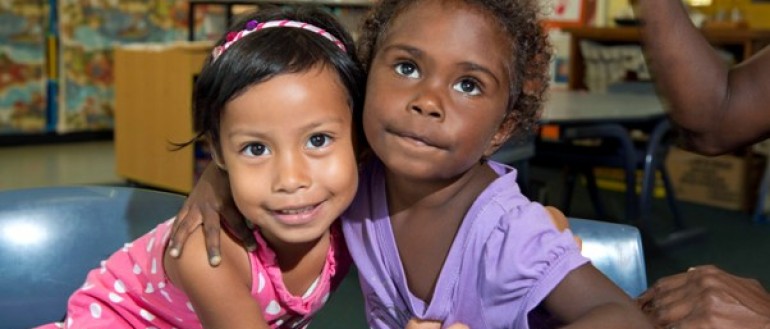Aims:
- To determine the effectiveness of rotavirus vaccination in reducing hospitalisations for those with diarrhoea caused by rotavirus
- To assess the indirect impact against other causes of diarrhoea providing critical information relevant to the vaccine's broader introduction in developing country settings.
Summary:
Rotavirus is the most important cause of infant gastroenteritis in the world, resulting in around half a million deaths every year. The rate of severe rotavirus gastroenteritis among Northern Territory (NT) children is many times higher than for other Australian children. Indigenous children account for most hospitalisations.
Rotavirus vaccination was commenced for all NT infants in 2006. We assessed the effectiveness of the vaccination program for preventing hospitalisation by enrolling children admitted to hospital with gastroenteritis and a comparator group of children admitted for respiratory illnesses.
Children admitted with rotavirus gastroenteritis were less likely to have received rotavirus vaccination than children admitted with respiratory illnesses. We estimated that vaccinating NT infants against rotavirus reduces their risk of hospitalisation by about 59%.
Although the vaccine appears to be less effective in the NT than elsewhere in the developed world, it is nonetheless an effective tool for preventing hospitalisation in this high burden population.
Implications for policy and practice:
This study demonstrated that rotavirus vaccination was worthwhile in the NT. This finding will assist global policy makers to introduce the vaccine in other high disease burden settings. The study provided clues regarding how vaccination can be improved, and these strategies will be the focus of future studies.
Our research has found:
- Rotavirus vaccination reduces the risk of rotavirus hospitalisation by 59% and the risk of all-cause gastroenteritis by 29% in the NT
- Despite the vaccination program, rotavirus remains the single most important cause of hospitalisation for gastroenteritis in the NT
- Infection with bacterial pathogens (especially enterovirulent E coli) and parasites (especially cryptosporidium) also account for a large proportion of admissions
- Co-infection is detected in more than half of rotavirus hospitalisations
- The lowest effectiveness is observed among older children (beyond age 12 months), among children co-infected with non-rotavirus pathogens, and those infected with rotavirus strains which are discordant with the vaccine strain.
Chief Investigator:
Contact information:
Project dates:
This project has been completed.
- Snelling, T.L., Markey, P., Carapetis, J.R, & Andrews, R.M. (2012). Rotavirus in the Northern Territory before and after vaccination. Microbiology Australia, 33(2), 61-63.
- Snelling, T.L., Andrews, R.M., Kirkwood, C.D., Culvenor, S., & Carapetis, J.R. (2011). Case-control evaluation of the effectiveness of the G1P[8] human rotavirus vaccine during an outbreak of rotavirus G2P[4] infection in central Australia. Clinical Infectious Diseases, 52(2), 191-9.
- Snelling, T.L., Schultz, R., Graham, J., Roseby, R., Barnes, G.L., Andrews, R.M., & Carapetis, J.R. (2009). Rotavirus and the Indigenous children of the Australian outback: monovalent vaccine effective in a high-burden setting. Clinical Infectious Diseases, 49(3), 428-31.

